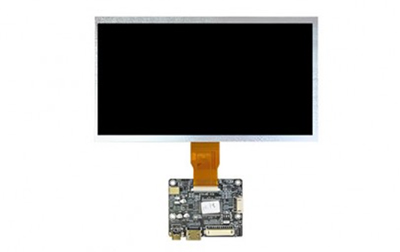What are the different types of LCD glass?
Views: 976 Update date: Dec 04,2023
Liquid Crystal Display (LCD) glass refers to the substrate or material used to manufacture the glass plates in an LCD display. There are primarily two types of LCD glass:
TFT (Thin Film Transistor) LCD Glass:
TFT is the most common type of LCD glass used in modern flat-panel displays, including computer monitors, televisions, and smartphone screens. Each pixel on the display is associated with a thin-film transistor, which acts as a switch to control the individual pixels. TFT technology provides better image quality, faster refresh rates, and higher resolutions compared to earlier passive-matrix technologies.
IPS (In-Plane Switching) LCD Glass:
OLED (Organic Light-Emitting Diode) Displays:
While not based on traditional LCD glass, OLED technology is worth mentioning. OLEDs use organic compounds to emit light, eliminating the need for a backlight. This technology allows for flexible and thinner displays with improved contrast ratios and deeper black levels.
AMOLED (Active Matrix Organic Light-Emitting Diode) Displays:
AMOLED is a type of OLED display with an active matrix of thin-film transistors for each individual pixel. AMOLED screens offer vibrant colors, high contrast ratios, and faster response times.
Super AMOLED:
Super AMOLED is a further advancement in AMOLED technology and is known for integrating the touch sensors directly into the display, resulting in a thinner and more responsive screen.
Mini-LED and Micro-LED:
These are emerging display technologies that use smaller LED elements to enhance brightness, contrast, and energy efficiency. While not technically LCD, they are considered part of the display technology landscape.
Each type of LCD glass has its own advantages and limitations, and the choice depends on factors such as cost, intended use, and desired display characteristics.
TFT (Thin Film Transistor) LCD Glass:
TFT is the most common type of LCD glass used in modern flat-panel displays, including computer monitors, televisions, and smartphone screens. Each pixel on the display is associated with a thin-film transistor, which acts as a switch to control the individual pixels. TFT technology provides better image quality, faster refresh rates, and higher resolutions compared to earlier passive-matrix technologies.
IPS (In-Plane Switching) LCD Glass:
IPS is a specific type of TFT LCD technology that enhances viewing angles and color reproduction. IPS panels offer wider viewing angles and better color accuracy compared to traditional TFT LCD. This technology is commonly used in high-end monitors, TVs, and some smartphones.

OLED (Organic Light-Emitting Diode) Displays:
While not based on traditional LCD glass, OLED technology is worth mentioning. OLEDs use organic compounds to emit light, eliminating the need for a backlight. This technology allows for flexible and thinner displays with improved contrast ratios and deeper black levels.
AMOLED (Active Matrix Organic Light-Emitting Diode) Displays:
AMOLED is a type of OLED display with an active matrix of thin-film transistors for each individual pixel. AMOLED screens offer vibrant colors, high contrast ratios, and faster response times.
Super AMOLED:
Super AMOLED is a further advancement in AMOLED technology and is known for integrating the touch sensors directly into the display, resulting in a thinner and more responsive screen.
Mini-LED and Micro-LED:
These are emerging display technologies that use smaller LED elements to enhance brightness, contrast, and energy efficiency. While not technically LCD, they are considered part of the display technology landscape.
Each type of LCD glass has its own advantages and limitations, and the choice depends on factors such as cost, intended use, and desired display characteristics.



